History of this project
In February of 2012, the first meeting on “de-extinction” was hosted at George Church’s lab at Harvard — organized by Ryan Phelan and Stewart Brand, with a focus on bringing back the extinct passenger pigeon. It became clear at that meeting that George had a personal passion for bringing back the woolly mammoth, the skills to do so, and the emerging genome editing technology that would need to be applied.
George had just finished drafting his soon-to-be-published book “Regenesis: How synthetic biology will reinvent nature and ourselves.” In his book he made the case for bringing back the woolly mammoth .…”the question arises whether we have an obligation to bring these creatures back, not as circus sideshow attractions but as a part of a focused scientific attempt to increase genetic diversity by reintroducing their extinct genomes into the global gene pool.”
That question set the stage for a broader workshop hosted by Revive & Restore in Oct of 2012 and held at National Geographic‘s historic Hubbard Hall in Washington DC, titled: “De-extinction projects, techniques, and ethics”. For the first time 36 scientists from around the world, spanning the fields of paleogenomics, biotechnology, conservation, and bioethics convened over two days to contemplate the future of de-extinction. This was the first in-person meeting for Sergei Zimov (Pleistocene Park) and George Church—and the two have continued to collaborate in spirit since that day.
Stewart Brand opined “ The last ten millennia is when most of the human-caused extinctions occurred, and yet DNA from those species remains readable. Undertaking to revive some of those creatures means engaging the time scale of species and habitats and continents. It is not measured in years or decades, but at least in centuries. Reviving extinct species is a long, slow, gradual, exciting process.”
In January of 2013, Stewart Brand’s TED talk “The Dawn of De-Extinction” went viral and created significant interest in the follow-up TEDxDeExtinction event which took place on March 15, 2013 at the Washington, D.C. headquarters of the National Geographic Society and featured 23 scientists. It was this event, organized and funded by Revive & Restore, that catapulted the idea of de-extinction into mainstream media.
Three key TEDxDeExtinction talks
Hybridizing With Extinct Species: George Church
Ancient DNA – What It Is And What It Could Be: Beth Shapiro
Not All Mammoths Were Woolly: Hendrik Poinar
Learn more about Revive & Restore’s TedXDeExtinction Event, here.
Developing the Science of De-Extinction
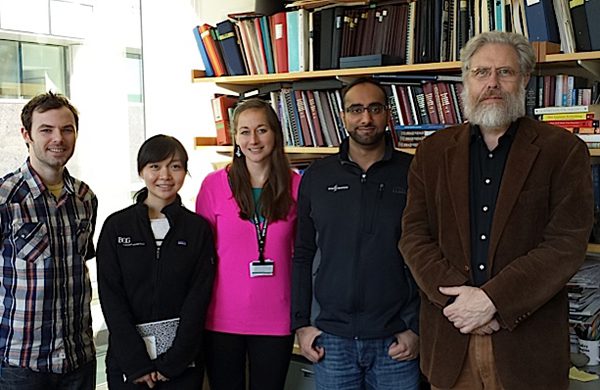
Members of the Woolly Mammoth Revival Team, Harvard University, February 2014. Pictured from L to R: Justin Quinn, Luhan Yang, Margo Monroe, Bobby Dhadwar, and George Church.
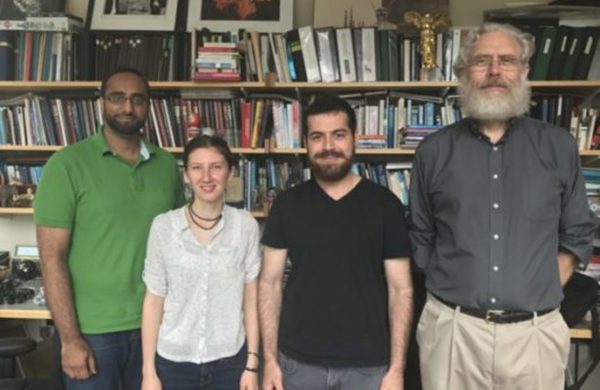
Members of the Woolly Mammoth Revival Team, Harvard University, Summer 2017. Pictured from L to R: Bobby Dhadwar, Eriona Hysolli, Ezra Frager, and George Church.
Early Science
Genomic Analysis
The mammoth has been at the center of paleogenomics advancements since tiny fragments of its DNA were first sequenced in 1994. In 2008, Dr. Hendrik Poinar showed that millions of base pairs of mammoth DNA could be sequenced from old hair, showing promise that a whole-genome could be obtained. By 2010, with a growing amount of the mammoth genome being sequenced, scientists were able to synthesize mammoth hemoglobin and experimentally demonstrate that mammoth blood was adapted for living in cold environments. With whole genomes of mammoths and elephants, other cold-adapted traits would be discovered to develop the blueprint for de-extinction.
Among the initial ancient DNA labs working towards a complete mammoth genome was Dr. David Reich, George Church’s colleague at Harvard. The Church team added to this initial research sequencing data from extant elephant genomes which led to their ability to compare the genomes between woolly mammoths and their closest living relatives, Asian elephants. By comparing living elephants, mammoths, and other extinct proboscideans, the team was able to discern just how closely related Asian elephants and mammoths are: their genomes are 99.6% identical.
It was through this rigorous comparison that Dr. Church was able to identify a suite of gene regions that could contribute to the unique traits inherent to the woolly mammoth, adding genes for thick woolly hair, insulating fat, and others to the previously discovered cold-adapted hemoglobin.

Blood oxygen release at low temperatures
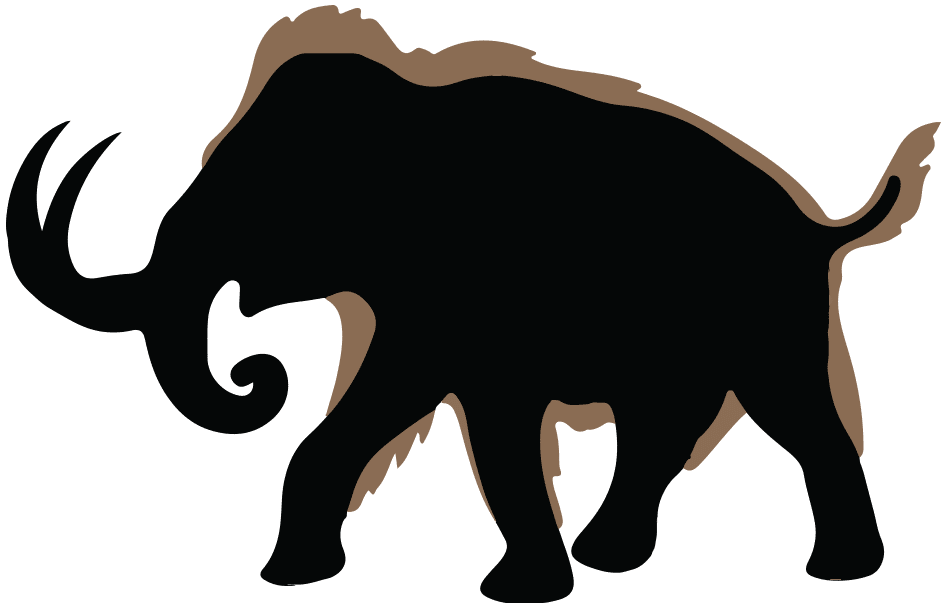
Thick hair protects from the elements
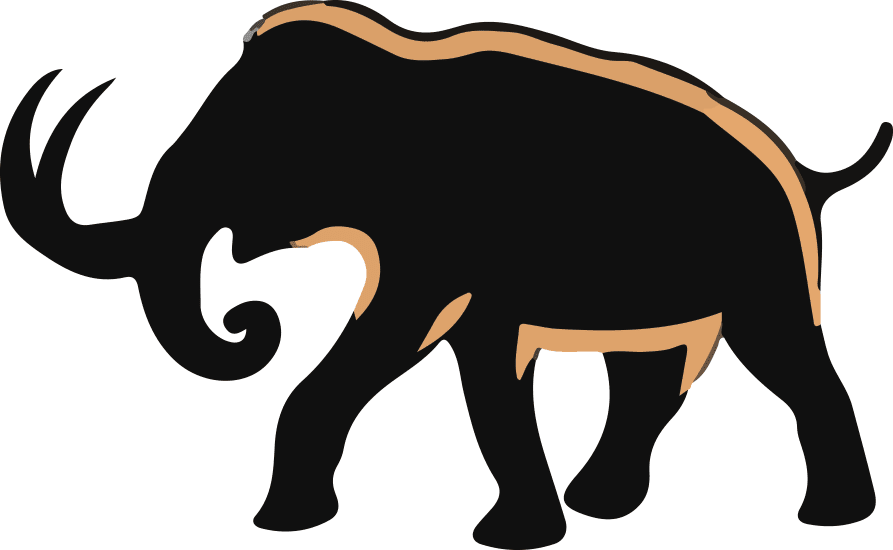
Subcutaneous fat for insulation and fasting
Genome Editing
- Using comparative genomics the Church team designed guide RNAs to direct the editing of elephant genes to corresponding sequences from the woolly mammoth genome. This is a key step in the design of a cold-adapted elephant genome.
- Revive & Restore secured for the Church lab elephant tissue samples to begin gene-editing proof-of-concept experiments using CRISPR technology. Tissues and cell cultures were obtained from the Woodland Park Zoo in Seattle, Washington, and San Diego Zoo Wildlife Alliance Frozen Zoo.
- The team began proof-of-concept experiments using CRISPR technology to edit the genomes of living elephant cell cultures (fibroblasts).
- The elephant gene known to encode hemoglobin, and other genes hypothesized to be critical for fat and hair development were successfully edited from the elephant sequences to the mammoth sequences in the fibroblast cell lines. These early experiments demonstrated the feasibility of gene editing for elephant genomes, a critical step for the Mammoth Revival.
Induced Pluripotent Stem Cells
From the beginning, it was assumed that Induced Pluripotent Stem Cells could offer a means to compare woolly mammoth traits to Asian elephant traits by creating organoid chips and other in vitro methods. This work could verify that gene-edited cells are capable of producing a viable mammoth before attempting to give birth to live animals. This has proved to be one of the most challenging aspects of the research to date.
Elephant Herpes Virus
During a visit to one of the elephant sanctuaries, we learned of a serious threat of a virulent strain of herpes affecting Asian elephants. To date, no research team has been able to culture the virus from tissue samples, making it impossible to develop vaccines or treatments. The Church Lab is synthesizing the virus in vitro from its sequenced genome in order to develop a version of the virus that can be cultured—the first step in finding a cure. This effort is one of the world’s first projects using synthetic biology to study and treat a wildlife disease. In other words, the mammoth de-extinction effort may confer significant, near-term benefits to Asian elephant conservation. Currently, the viral genome has been synthesized in multiple fragments. The next step is to stitch those fragments together to produce a full length synthetic viral genome, which will be used to create a viral production platform for further research.
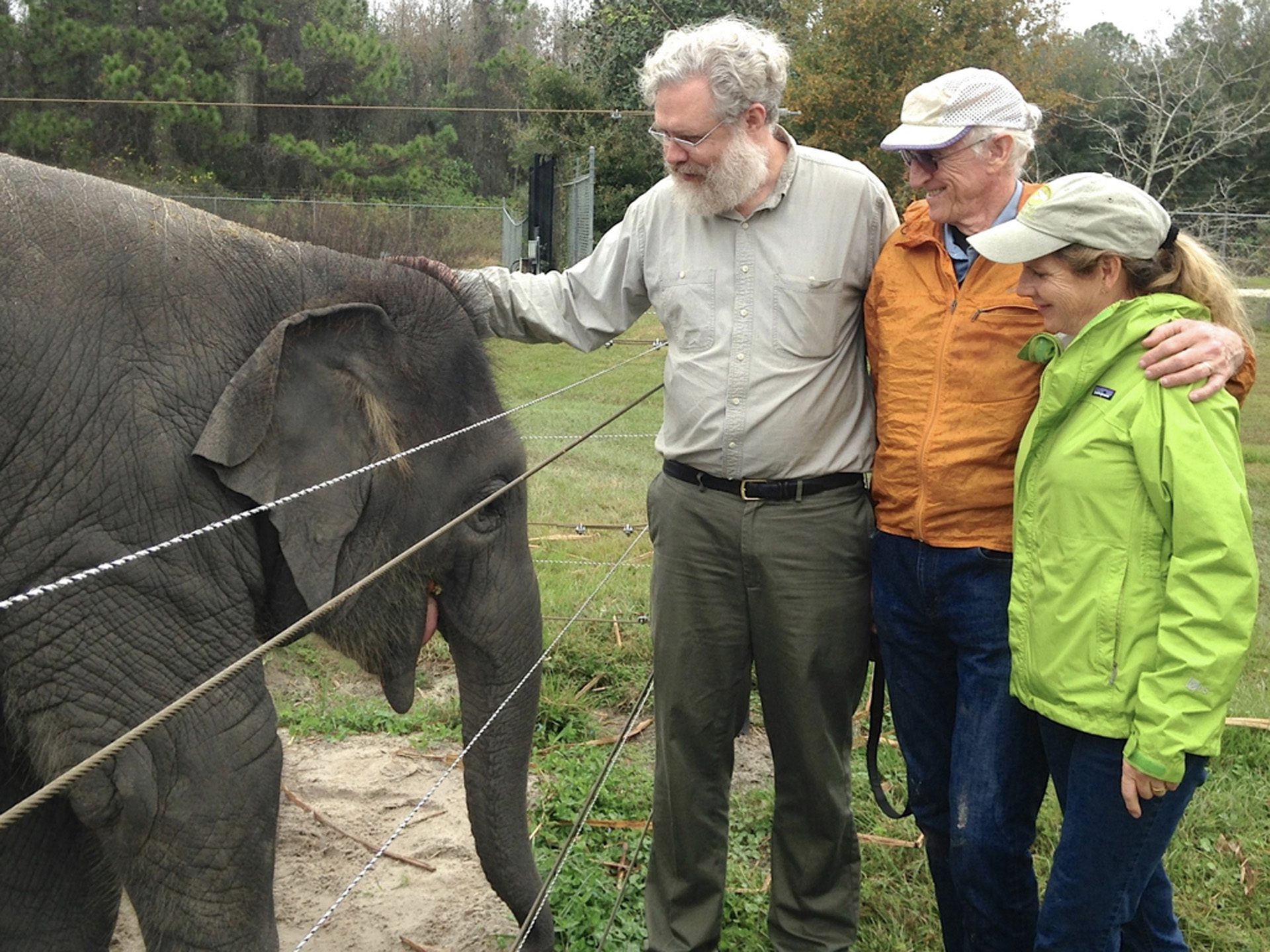
Mike (baby elephant), George Church, Stewart Brand, Ryan Phelan
Visit to Pleistocene Park, Siberia (2018)
For the filming of Stewart Brand’s documentary, “We Are As Gods”, George Church and Eriona Hysolli, were invited to travel with Brand and film crew to visit Pleistocene Park. At the Mammoth Museum in Siberia they collected mammoth tissue discovered in the permafrost of what was once the mammoth steppe. With these samples, George and Eriona were able to sequence additional woolly mammoth genomes—the more mammoth genomes there are to compare to elephant genomes, the greater clarity the path for de-extinction becomes.

Stewart Brand and George Church explore an ice tunnel in Siberia’s permafrost, which is thawing because of global warming and releasing massive amounts of methane and carbon dioxide.
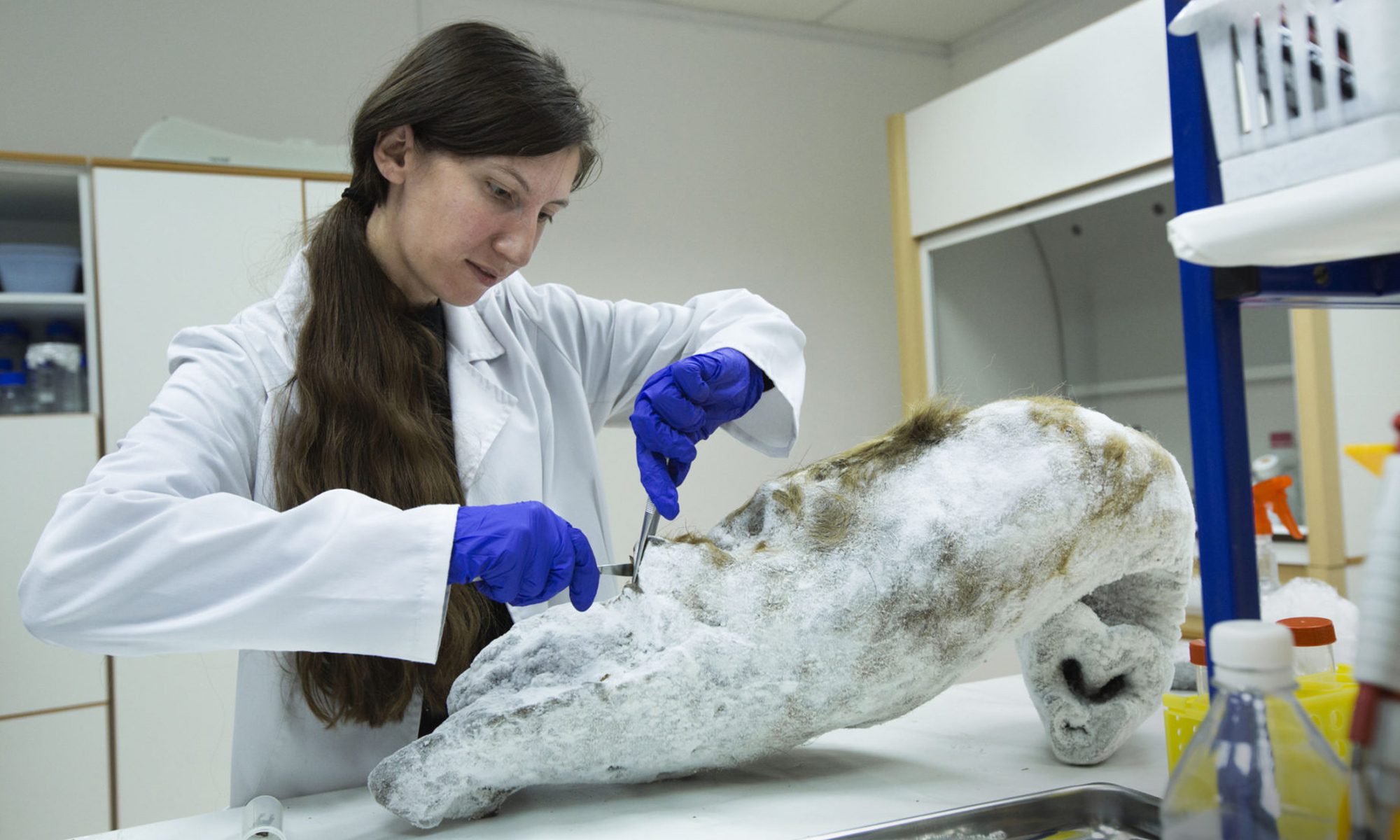
Eriona Hysolli collects a tissue specimen from a frozen mammoth trunk at the Mammoth Museum in Yukutsk, Siberia.
Recruiting for Key Researchers (2021)
In March of 2021, Revive & Restore announced the first Woolly Mammoth Revival Post-doctoral Fellowship. To respond to the need for a dedicated research team to build momentum for the project, Revive & Restore arranged to support a full-time post-doctoral fellow in the Church lab to work exclusively on the development of de-extinction technologies for the woolly mammoth.
Our Program Manager, Bridget Baumgartner collaborated with George Church and his team at Harvard to screen dozens of qualified and interested candidates. Three individuals with exceptional technical skills and passion for the project were selected and they will now become the first generation Colossal team inside the Church Lab.
All of this focus on de-extinction resulted in the “Woolly Mammoth Revival” becoming the cover story for these high profile publications:
National Geographic
Bringing Them Back To Life: The Revival Of An Extinct Species Is No Longer A Fantasy. But Is It A Good Idea?
By Carl Zimmer
April 2013
The New York Times Magazine
The Mammoth Cometh
By Nathaniel Rich
2/27/14
The Atlantic
Welcome to Pleistocene Park
By Ross McPhee
April 2017



